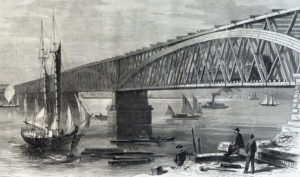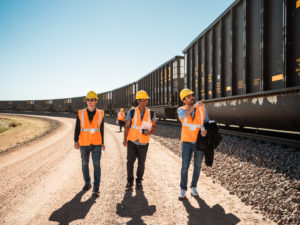California high-speed bidding may begin in 2011
Written by jroodCalifornia, the top recipient of funds from President Barack Obama's high-speed rail program, expects to issue a tender for a bullet-train line linking Los Angeles and San Francisco by late 2011, BusinessWeek reported.
The state expects bids from
about 10 trainmakers and construction may start as early as the first half of
2012, Quentin Kopp, a California High Speed Rail Authority board member, said
in an interview in Los Angeles yesterday. The train will whisk passengers
between the two cities, 432 miles apart, in less than 2 hours 40 minutes,
according to the state-backed group’s website.
California’s push for
high-speed rail, backed by Governor Arnold Schwarzenegger, comes as the most
populous U.S. state targets cuts in congestion and greenhouse gas emissions
from cars and airplanes. The Obama administration in January awarded $8 billion
for high-speed rail projects, causing companies such as Alstom SA, Siemens AG,
East Japan Railway Co., and China South Locomotive & Rolling Stock Corp. to
boost sales efforts.
"A high-speed line
between Los Angeles and San Francisco makes sense given their large populations
and the distance between them," said Yuuki Sakurai, chief executive
officer of Fukoku Capital Management Inc., which manages about $8.3 billion.
"There might be some companies trying to sell their technologies even if
they don’t make a profit, so they can make a name for themselves."
When fully completed the
state anticipates an 800-mile high-speed rail network running from San
Francisco to San Diego, near the U.S.-Mexico border. The total cost for the
system will be more than $40 billion.
California won a $2.3-billion
federal grant to help build the high-speed link, which is due to enter service
in 2020. That’s in addition to a $10-billion bond sale the state approved in
2008 to fund the rail line. The state has until September 2011 to complete an
environmental review, Kopp said.
"Allow four months for
the conclusion of proposals and bids, and I estimate conservatively that
construction will begin by the first part of 2012," said Kopp, who was at
a U.S. High Speed Rail Association conference in Los Angeles.
Schwarzenegger has proposed
running high-speed trains on existing conventional tracks between Los Angeles
and San Diego as early as November to spur interest in high-speed rail. Kopp
said he doubted whether that timeframe would be met.
Trains operated by Amtrak,
the U.S. long-distance passenger railroad, currently don’t run directly between
Los Angeles and San Francisco. Travel between Los Angeles and Oakland, which
neighbors San Francisco, on Amtrak’s Coast Starlight line takes about 12 hours
or twice as long as traveling by car. Air travel between Los Angeles and the
San Francisco Bay Area takes about an hour.
"The airlines will
certainly lose some of their business," said Fukoku Capital’s Sakurai.
"If you add up the time spent traveling to airports, security checks and
delays it makes sense to take the train."
U.S. Transport Secretary
Ray LaHood last month visited Japan, where he tried out a JR East bullet train
and rode Central Japan Railway Co.’s magnetic-levitation railway. He also
encouraged Japanese trainmakers to compete for U.S. contracts and to set up
plants in the country. Japan’s Transport Minister Seiji Maehara is planning a
second visit to the U.S. this year to help stoke interest in bullet trains.
Japanese trainmakers have
previously won overseas deals. Kawasaki Heavy Industries Ltd. made the trains
for Taiwan’s $15-billion high-speed line that started operating three years ago
between suburban Taipei and Kaohsiung in the south. Hitachi Ltd. built
high-speed trains running between London and the south- east of the U.K.
China’s Ministry of
Railways has teamed up with General Electric Co. in a bid to win U.S.
contracts. The two in November agreed a partnership to manufacture equipment
for high-speed rail projects.
Japan, which started the
world’s first bullet-train services in 1964, carried 308 million people by
high-speed train in the year ended March 2009, more than triple the number of
passengers on domestic airline routes. Amtrak’s Acela Express carried 3.4
million passengers in fiscal 2008.





